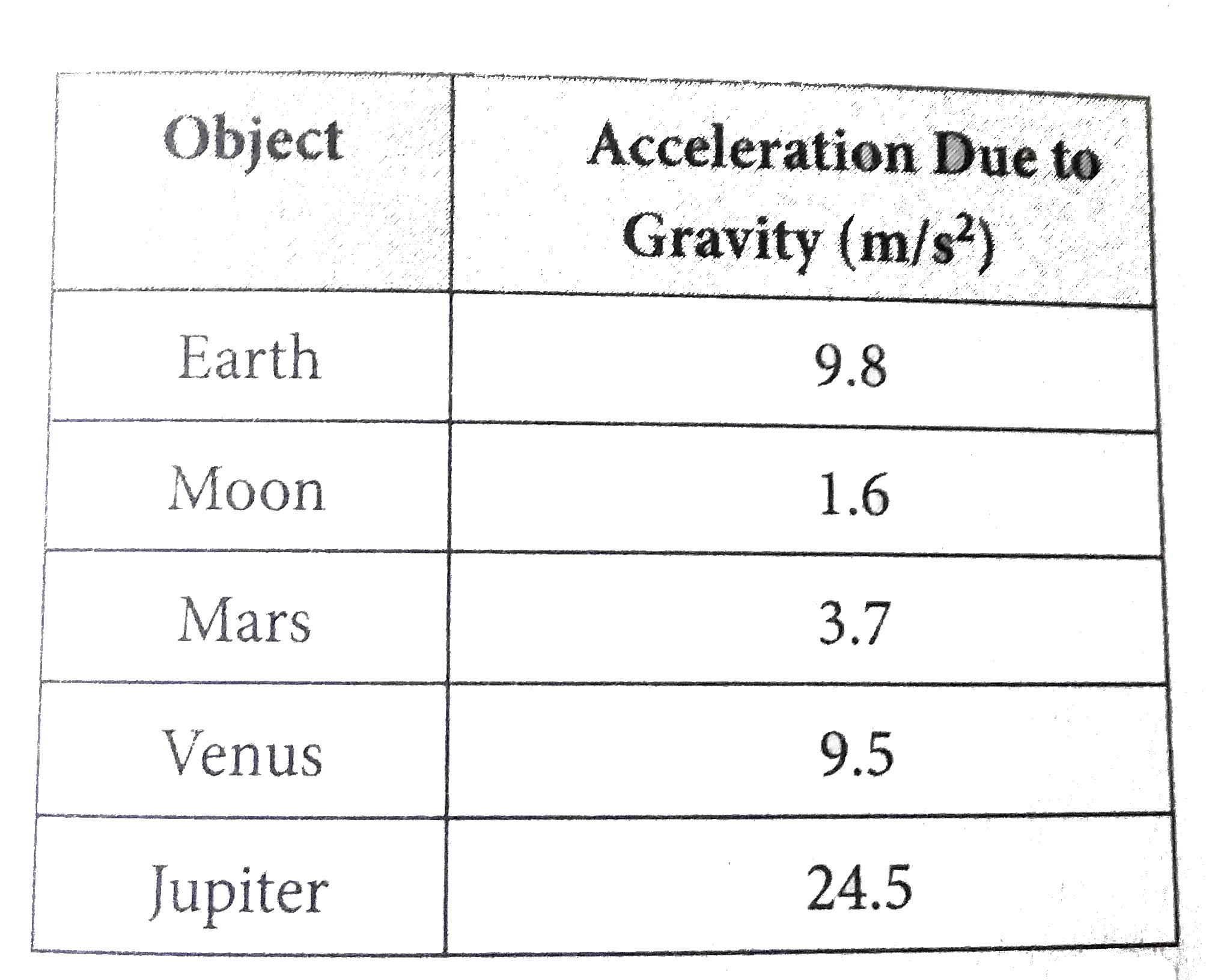An object reaches a maximum vertical height of 23.0 m when thrown vertically upward on the earth. How high would it travel on the moon where the acceleration due to gravity is about one sixth that on the earth ? Assume that initial velocity is the same.
138 m
100 m
10 m
69 m
The correct Answer is:A
Step by step video & image solution for An object reaches a maximum vertical height of 23.0 m when thrown vertically upward on the earth. How high would it travel on the moon where the acceleration due to gravity is about one sixth that on the earth ? Assume that initial velocity is the same. by Physics experts to help you in doubts & scoring excellent marks in Class 12 exams.
Updated on:21/07/2023Similar Questions
If an object reaches a maximum vertical height of 23.0 m when thrown vertically upward on earth how high would it travel on the moon where the acceleration due to gravity is about one sixth that on the earth ? Assume that initial velocity is the same.
View SolutionA pendulum clock Which ticks 60 times is one minute on earth is placed on the moon where the acceleration due to gravity is only one - sixth of that one the earth . How many times the clock will tick over there in one minute ?
View SolutionA ball is thrown vertically upwards. It goes to a height 20 m and then returns to the ground. Taking acceleration due to gravity g to be 10m s−2 ?, find the initial velocity of the ball
View SolutionA projectile attains a certain maximum height H1 when projected from earth. If it is projected at the same angle and with the same initial speed from the moon, where the acceleration due to gravity is one-sixth that on earth, the maximum height attended by the projectile is H2. THe ratio H2/H1 is:
View SolutionA ball is thrown vertically upwards. It goes to a height 20 m and then returns to the ground. Taking acceleration due to gravity g to be 10m s−2 ?, find the final velocity of ball on reaching the ground
View SolutionA particle is projected vertically upwards with a velocity √gR, where R denotes the radius of the earth and g the acceleration due to gravity on the surface of the earth. Then the maximum height ascended by the particle is
View SolutionA particle is projected vertically upwards with a velocity √gR, where R denotes the radius of the earth and g the acceleration due to gravity on the surface of the earth. Then the maximum height ascended by the particle is
View SolutionA ball is thrown vertically upwards. It goes to a height 20 m and then returns to the ground. Taking acceleration due to gravity g to be 10m s−2 ?, find the total time of journey of ball.
View SolutionA pobble is thrown vertically upwards from a bridge with an initial velocity of 4.9ms−1 . It strikes the water after 2 s. If acceleration due to gravity does the pebble strike the water ?
View Solution
The approximate height h of an object launched vertically upward after an elapsed time t is represented by the equation h=12at2+vot+ho, where a is acceleration due to gravity, vo is the object's initial velocity, and ho is the objects initial height. the table aabove gives the acceleration due to gravity on Earth's moon and several planets. If two identical objects launched vertically upward at an initial velocity of 40m/s from the surfaces of Mars and Earth's moon approximately how many more seconds will it take for the moon projectile to return to the ground than the Mars projectile?
View Solution
